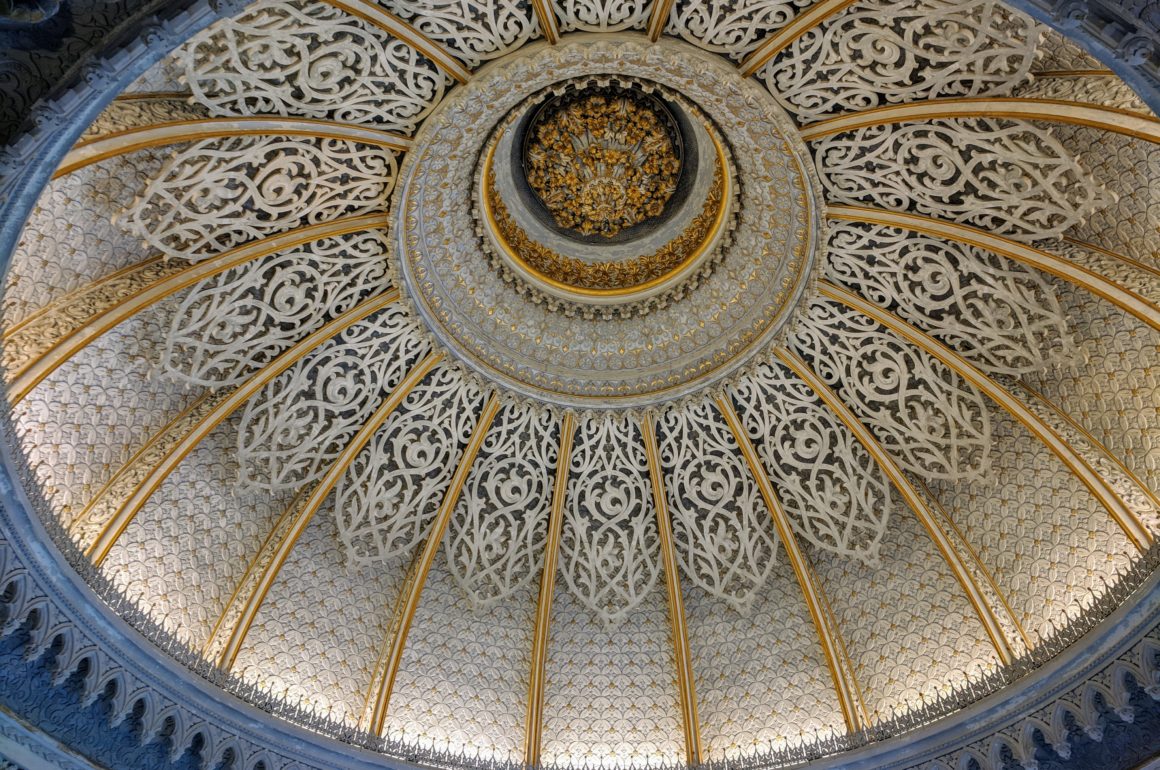
As we rode the local train from Lisbon to Sintra, I had flashbacks of our arrival, by train, in to Marseille, France. At the time of our visit, my expectations for Marseille were high, but reality was a cold splash of water in my face. I think Marseille is one of those cities that one either loves, or doesn’t. I was on the side of doesn’t and I was hoping Sintra would not disappoint in the same fashion.
Santiago to Sintra
After we completed our 145-mile Camino Portuguese trek, we traveled by train from Santiago, to Vigo, to Porto, to Lisbon, to Sintra in one day. It’s sounds a bit daunting but it all came together without a hitch. In full disclosure we had the advantage of having previously traveled the same routes by train, but not all on the same day, so we knew it would work. We boarded the 6:17 a.m. train out of Santiago and that afternoon caught the 2:13 p.m. train from Lisbon bound for Sintra.
Aside from booking our accommodations, we knew little about Sintra. We just set our minds to visit at the end of our Camino, before we flew back to the US. In my mind’s eye and from images I’d seen on the internet I knew Sintra was a small city in the forested mountains; a city from which fairy tales spawn. What I saw from my window view, on the train, was not at all what I envisioned. Not until the last few minutes on the train did I begin to feel as if we’d actually left Lisbon; the less than picturesque side of Lisbon.
Arrival by Train
From the train station it was an easy walk to the B&B we booked. Actually, the little train station is so centrally located I think it’s fairly easy to walk to just about any accommodation near the city center. Read any information about Sintra and you’ll find pretty much every source forewarns of trying to drive and park in Sintra. We don’t drive in Europe, so it was not an issue for us, but the parking in Sintra is in fact very limited.
The roads to the palaces are steep, narrow and winding, and they’re overrun with full-size local and charter buses.
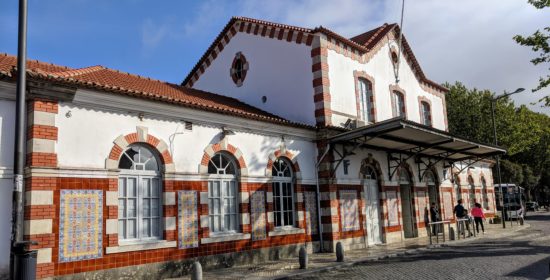
UNESCO World Heritage
With no particular plans in mind, and because it was late afternoon and we’d been awake since 5:30 a.m., we simply let our feet lead the way as we explored the city center on our first afternoon. Sintra, is definitely a tourist-driven destination. There are eateries and shops galore.
A UNESCO World Heritage Site, it’s easy to see why visitors flock to Sintra. We highly recommend a visit in the shoulder and/or off season. It was quite busy when we were there at the end of April, it must be overflowing with tourists in the summer months as Sintra makes for a popular day trip from Lisbon.
Quinta da Regaleira
The Initiation Well, on the grounds of Quinta da Regaleira, had long intrigued me. I can’t say that I have a bucket list, but visiting Sintra and seeing the well would have been high on the list if I had one. At 88′ feet deep, the initiation well has 139 steps and it is a place of great mysticism. Its purpose never had anything to do with water. Rather, it was a place of initiation and secret ceremonies. The owner/visionary of the estate was Antonio Augusto Carvalho Monteiro, who was known to be a Freemason.
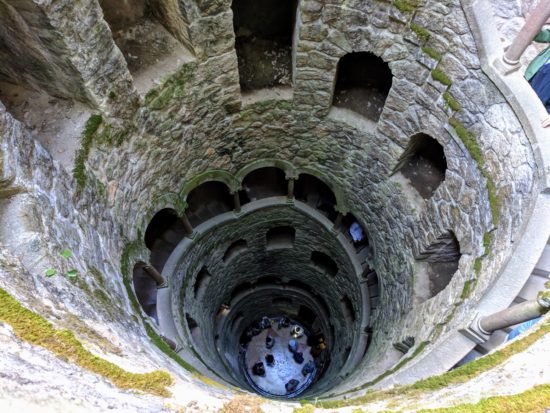
We walked down the stairs of the well and at the bottom there is a labyrinth of tunnels and grottos. It’s all very intriguing and sets the stage for one’s imagination to run wild. It feels as if one is in a chapter of a Dan Brown novel. The good news is one does not have to climb back up the stairs! Visitors find their way out through the tunnels to a grotto and across a set of stepping stones in the water.
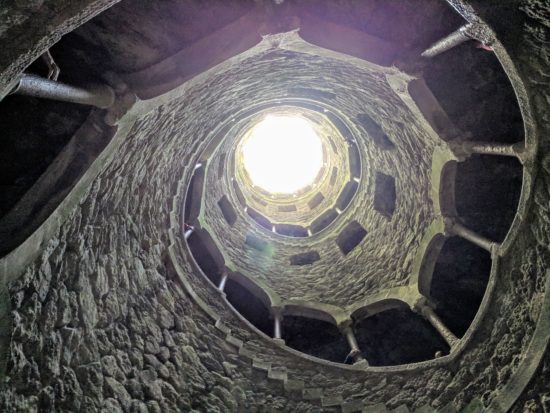
The palace, the gardens and the small chapel are all extraordinary. The architecture is incredible and all very symbolic of different philosophies. Again, all very mystic. As we toured the house and gardens I couldn’t help but feel as if there were a thousand stories still waiting to be told.
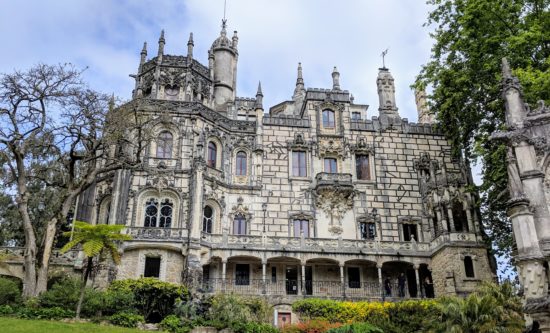
Tuk Tuk to Monserrate
Our next stop of the day was the Palace of Monserrate. I have to say I think it may have been my favorite palace in Sintra. It defied the imagination.
Standing outside the walls of Quinta da Regaleira, the question we asked ourselves was, “How do we get to Monserrate?” We had walked from the city center to Quinta da Regaleira but hadn’t thought beyond that. We spotted a tuk tuk, but the driver said she wanted $20. Um? No. Not wanting to walk further, our only option was to wait for the bus.
I decided to approach the tuk tuk driver again and ask if she would please take us for $10. She agreed and off we went. Yes, she was trying to fleece us but she was super friendly and we enjoyed the brief ride. *About 25 seconds in to the video you can see the size of bus navigating the narrow road.
Palace of Monserrate
There are so many highlights when visiting the palace, one of which is that it is a bit lessor known and further from the city center than the other palaces. As a result, the crowds are not as thick. At least they weren’t while we were there. Another highlight is the stunning view from every direction, and of course the gardens. You don’t have to be a garden guru to appreciate the layout and incredible detail of the acres of beauty. Plants from all over the world grow in the peaceful park-like grounds of the estate.
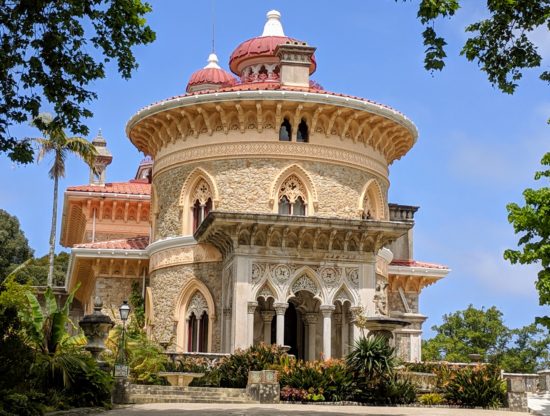
Free to Roam
Visitors to the palace are free to roam the rooms of the palace at their own pace. The story of the palace is told on printed wall banners in many of the rooms, with a wonderful selection of photos. Since the home is, for the most part void of furnishings, the photos give visitors a glimpse of what the palace looked like as a family home. Also, there is an informative short documentary that plays continuously. The story told in the documentary is an interview with an elderly gentlemen who lived in the palace as a young boy.
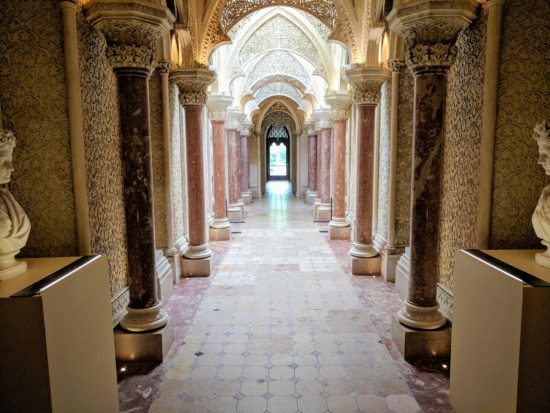
Built from the ruins of a former palace dating back to the late 1700’s, Monserrate was transformed (around 1860) in to the summer residence of Sir Francis Cook, an Englishman. The family, of the elderly gentleman in the documentary, lived in the house as caretakers when the family of Francis Cook was not in residence.
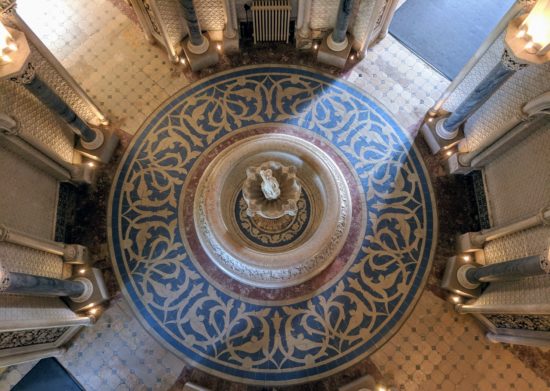
Abandoned
The war(s) came and eventually the house became abandoned. Monserrate was purchased by the Portuguese State in 1949. In 2000, Parks of Sintra took over management of the estate and renovations began the same year. The palace architecture, modeled in Arabic, Indian and Moorish fashion, is exquisite in its detail.
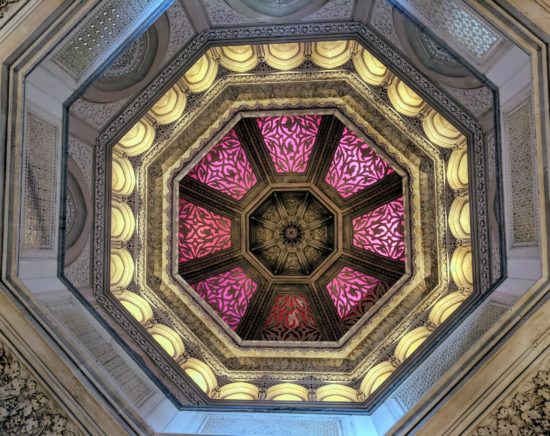
Sometimes, when we tour castles, palaces and mansions it’s hard to imagine the estate as an actual home, usually due to the enormity of the place. At Monserrate, even though every room was elaborate in its detail, it still had a sense of intimacy. It wasn’t hard to imagine the palace as a home.
Our day was well-spent touring the two estates and we had a game plan for the following day. But that’s a story still to come. Stay tuned!
If You Go:
- Circuit Bus 434 * Across the street from the train station there is a bus/ticket office. Palace admission tickets can be bought there as well.
- Lisbon Urban Trains
To Learn More:
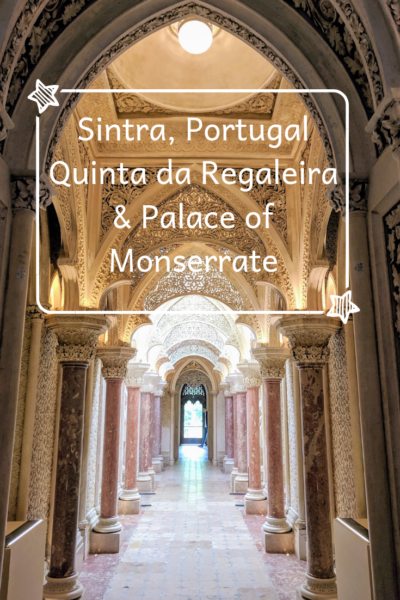






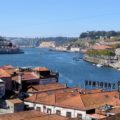
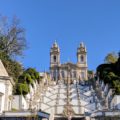




We were overwhelmed by our stay in Lisbon that in the end we gave up plans to visit some of the highlights. Our mistake. I wish we had just sucked it up. Beautiful photos Patty and love the video. What a cute tuk-tuk!
I can understand that, Lissette. Lisbon to me is just another big city in my book. I like the city, but I don’t love it like I love Porto. Sintra was definitely worth visiting. I’m glad we made the time to go and I’m really glad we went at the end of April, it must be swarming with tourists in the summer. The tuk-tuk driver was adorable, so friendly, we immediately forgave her for trying to fleece us! 🙂
Brian and I enjoyed Sintra, particularly the incredible Quinta da Regaleira gardens. Staying at least one night there as oposed to a day trip is very wise. We used a tuk tuk to get around also. Great write up and photos.
The gardens at QdR were incredible with so much attention to the tiniest detail. We stayed 3 nights in Sintra and it was (I think) the perfect length.
When we spent 5 weeks in Portugal and 2 of them were in Lisbon somehow we never gathered up the energy to get to Sintra. Our budget was overextended and word of the crowds were off putting. All that to say I really enjoyed going there with you guys!
Your photos are fabulous ~ love the ones from top and bottom of that amazingly designed well and the details of architecture and design.
Looks like you did very well.
Peta
I hear you about the worrisome crowds. We had the same concerns but decided we’d just deal with it. And, since we were there before the school year ended, I think it made a big difference. With that being said, I would not go anywhere near Sintra from mid May to Mid September.
I’d visit Sintra but based on the many stories I’ve heard I’d do as you did Patti – book and overnight stay and start very early the next morning before the day trippers arrive. I went over 25 years ago when there were much less tourists and saw the Pena Palace and the Castelo Dos Mouros. But I didn’t know about the Palace of Monserrate. Some beautiful architecture!

Frank recently posted…Visiting Georgia’s Far North
Agreed, Frank. We stayed 3 nights which gave us two full days of exploring a total of 4 sites. It worked out beautifully. We got to see enough without being exhausted from trying to do too much. What we did see was all fabulous. People (with money) and royalty knew how to live!